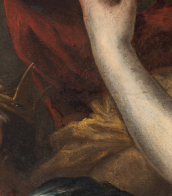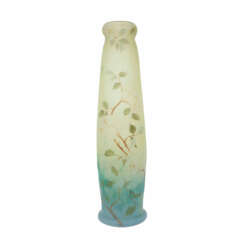cis

Francis Picabia, born Francis-Marie Martinez de Picabia, was a French avant-garde painter, poet, and typographist, whose work is celebrated for its diversity and innovation. His journey through various art movements, including Impressionism, Cubism, Dadaism, and Surrealism, showcases his refusal to be confined by any one style. Picabia's art is known for its eclectic nature, often blending mechanical elements with organic forms, thereby challenging traditional perceptions of art and beauty.
Picabia's significant contribution to the art world lies not just in his varied artistic output but also in his philosophical approach to creation. He believed in the freedom of expression, often using his art to critique societal norms and the art establishment itself. This rebellious spirit made him a pivotal figure in the Dada movement, where his works were celebrated for their irony and disdain for conventional art values.
Among his notable works, "Amorous Parade" and "I See Again in Memory My Dear Udnie" stand out, housed in prestigious institutions like the Museum of Modern Art in New York. These pieces exemplify Picabia's mastery over blending different elements of art movements, creating works that remain influential to this day. His legacy is not just in the pieces he created but also in his attitude towards art, encouraging future generations to challenge and redefine the boundaries of creativity.
For collectors and experts in art and antiques, Picabia's works represent not only significant artistic achievements but also valuable insights into the evolution of modern art. To stay informed about new product sales and auction events related to Francis Picabia, sign up for updates. This subscription is an essential resource for enthusiasts looking to enrich their collections with pieces from one of the most innovative artists of the 20th century.


Francis Picabia, born Francis-Marie Martinez de Picabia, was a French avant-garde painter, poet, and typographist, whose work is celebrated for its diversity and innovation. His journey through various art movements, including Impressionism, Cubism, Dadaism, and Surrealism, showcases his refusal to be confined by any one style. Picabia's art is known for its eclectic nature, often blending mechanical elements with organic forms, thereby challenging traditional perceptions of art and beauty.
Picabia's significant contribution to the art world lies not just in his varied artistic output but also in his philosophical approach to creation. He believed in the freedom of expression, often using his art to critique societal norms and the art establishment itself. This rebellious spirit made him a pivotal figure in the Dada movement, where his works were celebrated for their irony and disdain for conventional art values.
Among his notable works, "Amorous Parade" and "I See Again in Memory My Dear Udnie" stand out, housed in prestigious institutions like the Museum of Modern Art in New York. These pieces exemplify Picabia's mastery over blending different elements of art movements, creating works that remain influential to this day. His legacy is not just in the pieces he created but also in his attitude towards art, encouraging future generations to challenge and redefine the boundaries of creativity.
For collectors and experts in art and antiques, Picabia's works represent not only significant artistic achievements but also valuable insights into the evolution of modern art. To stay informed about new product sales and auction events related to Francis Picabia, sign up for updates. This subscription is an essential resource for enthusiasts looking to enrich their collections with pieces from one of the most innovative artists of the 20th century.


Narcisse Virgilio Díaz de la Peña was a French painter of the Barbizon school.
Díaz exhibited many pictures at the Paris Salon, and was decorated in 1851 with the rank of Chevalier (Knight) of the Légion d’honneur.


Pieter Franciscus Peters Jr. or Pieter Francis Peters is a German landscape painter and graphic artist of Dutch origin.
His father, Pieter Franciscus Peters the Elder, was a famous glass painter and taught his son the art of drawing. Pieter Francis Peters painted landscapes, first in the style of Dutch Romanticism and later, in the spirit of the times, he turned to Impressionism.


Francis Bacon was an Irish-born British figurative painter known for his raw, unsettling imagery. Focusing on the human form, his subjects included crucifixions, portraits of popes, self-portraits, and portraits of close friends, with abstracted figures sometimes isolated in geometrical structures. Rejecting various classifications of his work, Bacon said he strove to render "the brutality of fact." He built up a reputation as one of the giants of contemporary art with his unique style.


Pieter Franciscus Peters Jr. or Pieter Francis Peters is a German landscape painter and graphic artist of Dutch origin.
His father, Pieter Franciscus Peters the Elder, was a famous glass painter and taught his son the art of drawing. Pieter Francis Peters painted landscapes, first in the style of Dutch Romanticism and later, in the spirit of the times, he turned to Impressionism.


Pieter Franciscus Peters Jr. or Pieter Francis Peters is a German landscape painter and graphic artist of Dutch origin.
His father, Pieter Franciscus Peters the Elder, was a famous glass painter and taught his son the art of drawing. Pieter Francis Peters painted landscapes, first in the style of Dutch Romanticism and later, in the spirit of the times, he turned to Impressionism.


Pieter Franciscus Peters Jr. or Pieter Francis Peters is a German landscape painter and graphic artist of Dutch origin.
His father, Pieter Franciscus Peters the Elder, was a famous glass painter and taught his son the art of drawing. Pieter Francis Peters painted landscapes, first in the style of Dutch Romanticism and later, in the spirit of the times, he turned to Impressionism.


Pieter Franciscus Peters Jr. or Pieter Francis Peters is a German landscape painter and graphic artist of Dutch origin.
His father, Pieter Franciscus Peters the Elder, was a famous glass painter and taught his son the art of drawing. Pieter Francis Peters painted landscapes, first in the style of Dutch Romanticism and later, in the spirit of the times, he turned to Impressionism.


Andrzej Cisowski is a Polish multimedia artist and graphic artist.
Cisowski graduated from the Academy of Fine Arts in Warsaw and was initially associated with the Neue Wilde movement (Neo-Fauvism). Over time he developed his own individual style on the border of figurative painting and new expression. The artist also created paintings based on old photographs.


Pieter Franciscus Peters Jr. or Pieter Francis Peters is a German landscape painter and graphic artist of Dutch origin.
His father, Pieter Franciscus Peters the Elder, was a famous glass painter and taught his son the art of drawing. Pieter Francis Peters painted landscapes, first in the style of Dutch Romanticism and later, in the spirit of the times, he turned to Impressionism.


Pieter Franciscus Peters Jr. or Pieter Francis Peters is a German landscape painter and graphic artist of Dutch origin.
His father, Pieter Franciscus Peters the Elder, was a famous glass painter and taught his son the art of drawing. Pieter Francis Peters painted landscapes, first in the style of Dutch Romanticism and later, in the spirit of the times, he turned to Impressionism.


Pieter Franciscus Peters Jr. or Pieter Francis Peters is a German landscape painter and graphic artist of Dutch origin.
His father, Pieter Franciscus Peters the Elder, was a famous glass painter and taught his son the art of drawing. Pieter Francis Peters painted landscapes, first in the style of Dutch Romanticism and later, in the spirit of the times, he turned to Impressionism.




Pieter Franciscus Peters Jr. or Pieter Francis Peters is a German landscape painter and graphic artist of Dutch origin.
His father, Pieter Franciscus Peters the Elder, was a famous glass painter and taught his son the art of drawing. Pieter Francis Peters painted landscapes, first in the style of Dutch Romanticism and later, in the spirit of the times, he turned to Impressionism.


Narcisse Virgilio Díaz de la Peña was a French painter of the Barbizon school.
Díaz exhibited many pictures at the Paris Salon, and was decorated in 1851 with the rank of Chevalier (Knight) of the Légion d’honneur.


Narcisse Virgilio Díaz de la Peña was a French painter of the Barbizon school.
Díaz exhibited many pictures at the Paris Salon, and was decorated in 1851 with the rank of Chevalier (Knight) of the Légion d’honneur.


Narcisse Virgilio Díaz de la Peña was a French painter of the Barbizon school.
Díaz exhibited many pictures at the Paris Salon, and was decorated in 1851 with the rank of Chevalier (Knight) of the Légion d’honneur.


Narcisse Virgilio Díaz de la Peña was a French painter of the Barbizon school.
Díaz exhibited many pictures at the Paris Salon, and was decorated in 1851 with the rank of Chevalier (Knight) of the Légion d’honneur.


Narcisse Virgilio Díaz de la Peña was a French painter of the Barbizon school.
Díaz exhibited many pictures at the Paris Salon, and was decorated in 1851 with the rank of Chevalier (Knight) of the Légion d’honneur.


Narcisse Virgilio Díaz de la Peña was a French painter of the Barbizon school.
Díaz exhibited many pictures at the Paris Salon, and was decorated in 1851 with the rank of Chevalier (Knight) of the Légion d’honneur.


Narcisse Virgilio Díaz de la Peña was a French painter of the Barbizon school.
Díaz exhibited many pictures at the Paris Salon, and was decorated in 1851 with the rank of Chevalier (Knight) of the Légion d’honneur.


Narcisse Virgilio Díaz de la Peña was a French painter of the Barbizon school.
Díaz exhibited many pictures at the Paris Salon, and was decorated in 1851 with the rank of Chevalier (Knight) of the Légion d’honneur.


Francis Picabia, born Francis-Marie Martinez de Picabia, was a French avant-garde painter, poet, and typographist, whose work is celebrated for its diversity and innovation. His journey through various art movements, including Impressionism, Cubism, Dadaism, and Surrealism, showcases his refusal to be confined by any one style. Picabia's art is known for its eclectic nature, often blending mechanical elements with organic forms, thereby challenging traditional perceptions of art and beauty.
Picabia's significant contribution to the art world lies not just in his varied artistic output but also in his philosophical approach to creation. He believed in the freedom of expression, often using his art to critique societal norms and the art establishment itself. This rebellious spirit made him a pivotal figure in the Dada movement, where his works were celebrated for their irony and disdain for conventional art values.
Among his notable works, "Amorous Parade" and "I See Again in Memory My Dear Udnie" stand out, housed in prestigious institutions like the Museum of Modern Art in New York. These pieces exemplify Picabia's mastery over blending different elements of art movements, creating works that remain influential to this day. His legacy is not just in the pieces he created but also in his attitude towards art, encouraging future generations to challenge and redefine the boundaries of creativity.
For collectors and experts in art and antiques, Picabia's works represent not only significant artistic achievements but also valuable insights into the evolution of modern art. To stay informed about new product sales and auction events related to Francis Picabia, sign up for updates. This subscription is an essential resource for enthusiasts looking to enrich their collections with pieces from one of the most innovative artists of the 20th century.

































































